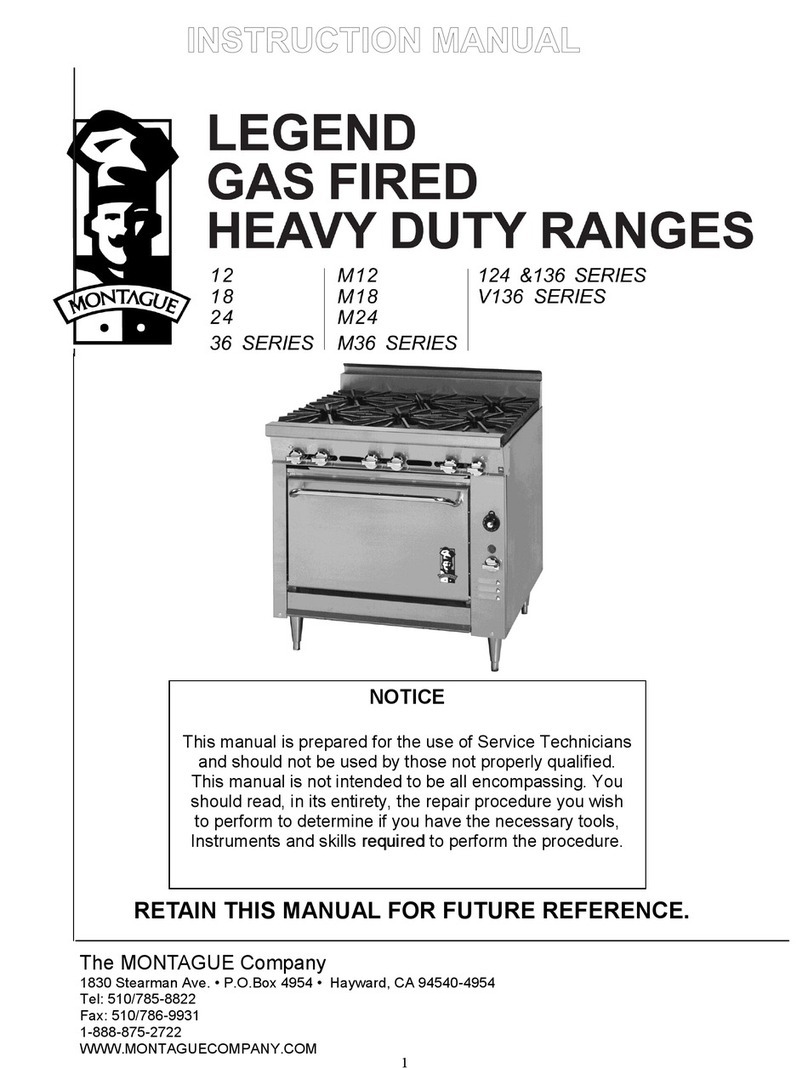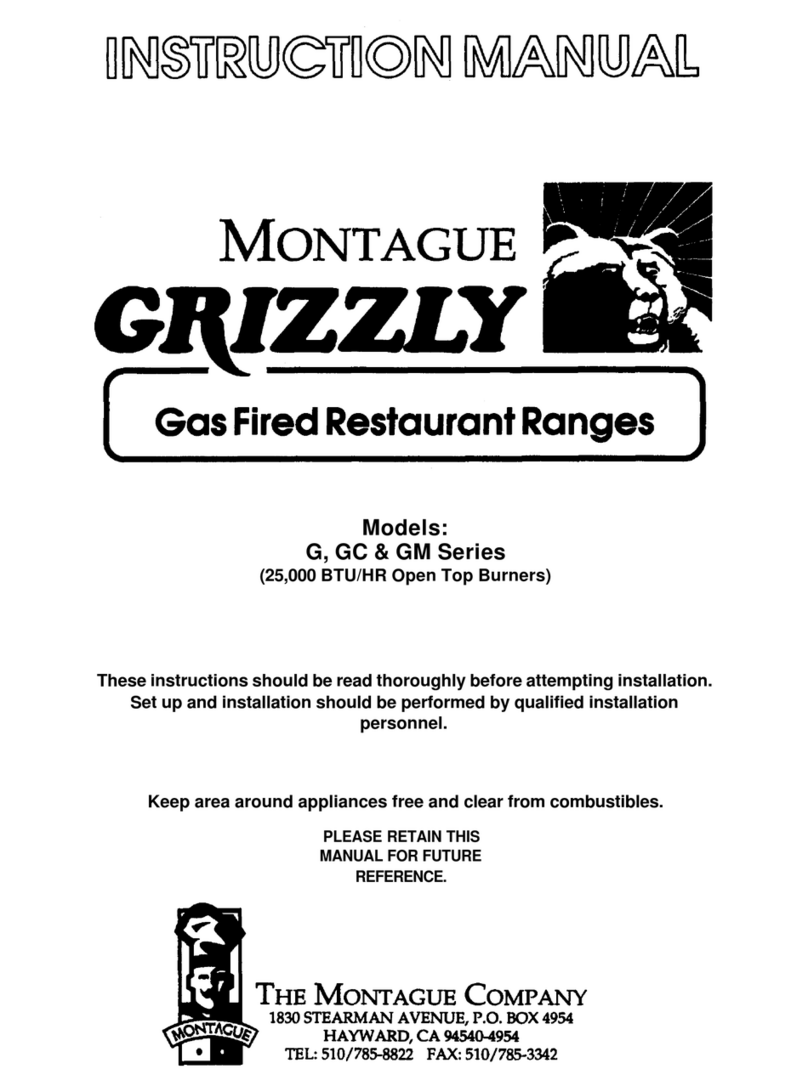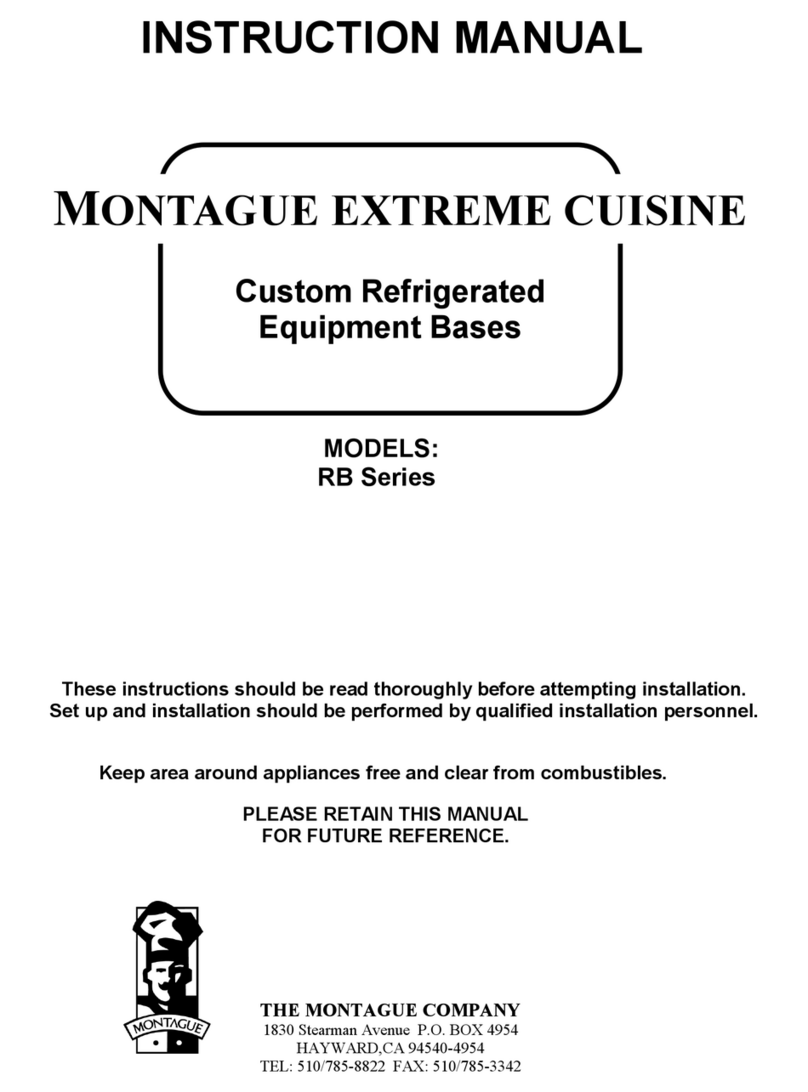
3
INSTALLATION
The Montague Grizzly gas oven ranges are manufactured for use with the type of gas indicated on
the name plate.
The Montague Grizzly gas convection oven type ranges are produced with the best possible
material and workmanship. PROPER INSTALLATION IS ESSENTIAL FOR SAFE AND EFFICIENT
TROUBLE-FREE OPERATION.
Qualified installation personnel are individuals, a firm, corporation, or company which in person, or
through a representative are engages in, and are responsible for:
A. The installation or replacement of gas piping or the connection, installation, repair, or servicing
of equipment, who is experienced in such work, familiar with all precautions required, and has
complied with all requirements of stats or local authorities having jurisdiction. Reference:
National Fuel Gas Code Z223.1, Section 1.4.
B. The installation of electrical wiring from the electric meter, main control box, or service outlet to
the electric appliance. qualified installation personnel must be experienced in such work, be
familiar with all precautions required, and have complied with all requirements of state and local
authorities having jurisdiction. Reference: National Electric Code, NFPA No. 70.
THE INSTALLATION INSTRUCTIONS CONTAINED HEREIN ARE FOR THE USE OF
QUALIFIED INSTALLATION AND SERVCE PERSONNEL ONLY. INSTALLATION OR
SERVICE BY OTHER THAN QUALIFIED PERSONNEL MAY RESULT IN DAMAGE TO THE
OVEN AND/OR INJURY TO THE OPERATOR.
READ CAREFULLY AND FOLLOW THESE INSTRUCTIONS
THE RANGE(S) MUST BE INSTALLED IN ACCORDANCE WITH LOCAL CODES, OR IN
THE ABSENCE OF LOCAL CODES, WITH THE NATIONAL FUEL GAS CODE, ANSI
Z223.1, NATURAL GAS INSTALLATION CODE, CAN/CGA-B149.1, OR THE PROPANE
INSTALLATION CODE, CAN/CGA-B149.2, AS APPLICABLE, INCLUDING:
1. The appliance and its individual shutoff valve must be disconnected from the gas supply
piping system during any pressure testing of that system at test pressures in excess of
1/2 psig. (3.45 kPa)
2. The appliance must be isolated from the gas supply piping system by closing its individu-
al manual shutoff valve during any pressure testing of the gas supply piping system at
test pressure equal to or less than 1/2 psig. (3.45 kPa)


































